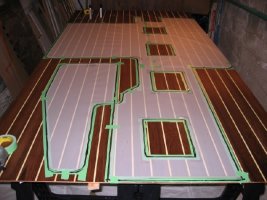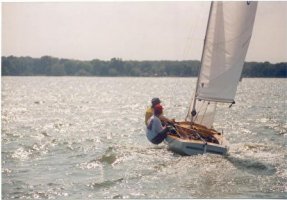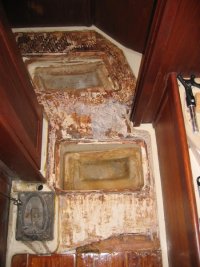Geoff Johnson
Fellow Ericson Owner
Thanks, Martin, good advice. What do you think of epoxy on the top surface (as a base for the varnish)? This is what a quick Google search turned up:
"You should consider sealing the cabin sole with Clear Penetrating Epoxy
Sealer (CPES). This is a 50:50 ready-to-mix and is much thinner than
normal epoxy resin and will penetrate deeper. I would recommend 2 coats
and then a light sanding with fine paper. After that you can lay down
varnish, or one or two-part urethanes for a good bond. We have used this
system extensively on our boat, as well as those of others, and found the
final result superior to just the varnish or urethanes. The CPES darkens
the wood slightly, just as an initial coat of clear varnish will.
You can get full details on the CPES from our website.
The Rot Doctor
http://www.rotdoctor.com/"
"You should consider sealing the cabin sole with Clear Penetrating Epoxy
Sealer (CPES). This is a 50:50 ready-to-mix and is much thinner than
normal epoxy resin and will penetrate deeper. I would recommend 2 coats
and then a light sanding with fine paper. After that you can lay down
varnish, or one or two-part urethanes for a good bond. We have used this
system extensively on our boat, as well as those of others, and found the
final result superior to just the varnish or urethanes. The CPES darkens
the wood slightly, just as an initial coat of clear varnish will.
You can get full details on the CPES from our website.
The Rot Doctor
http://www.rotdoctor.com/"
Last edited:



